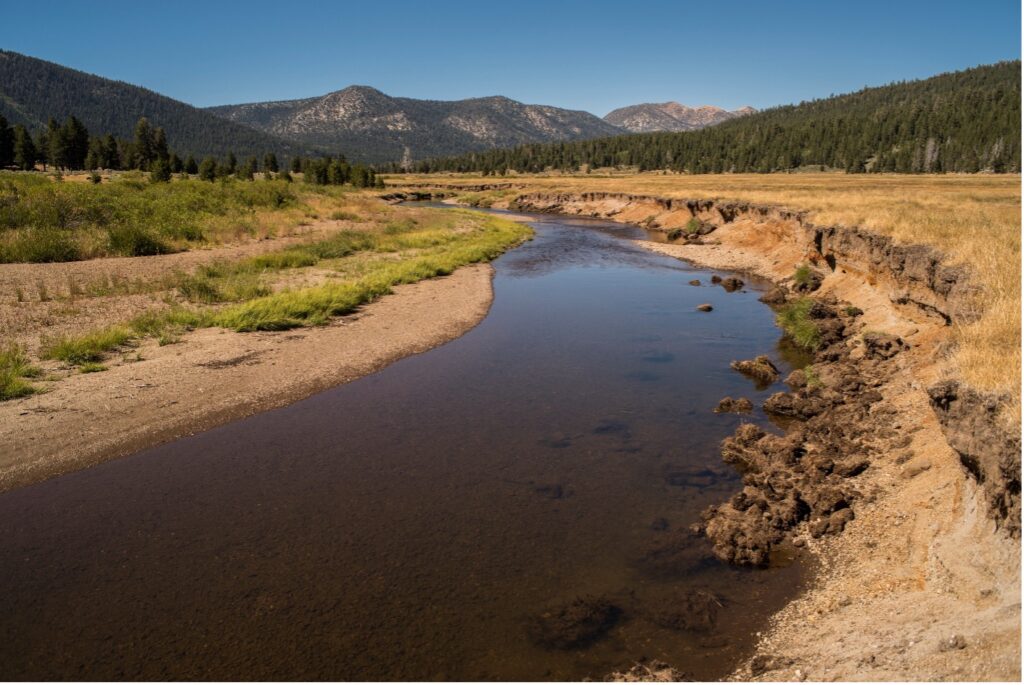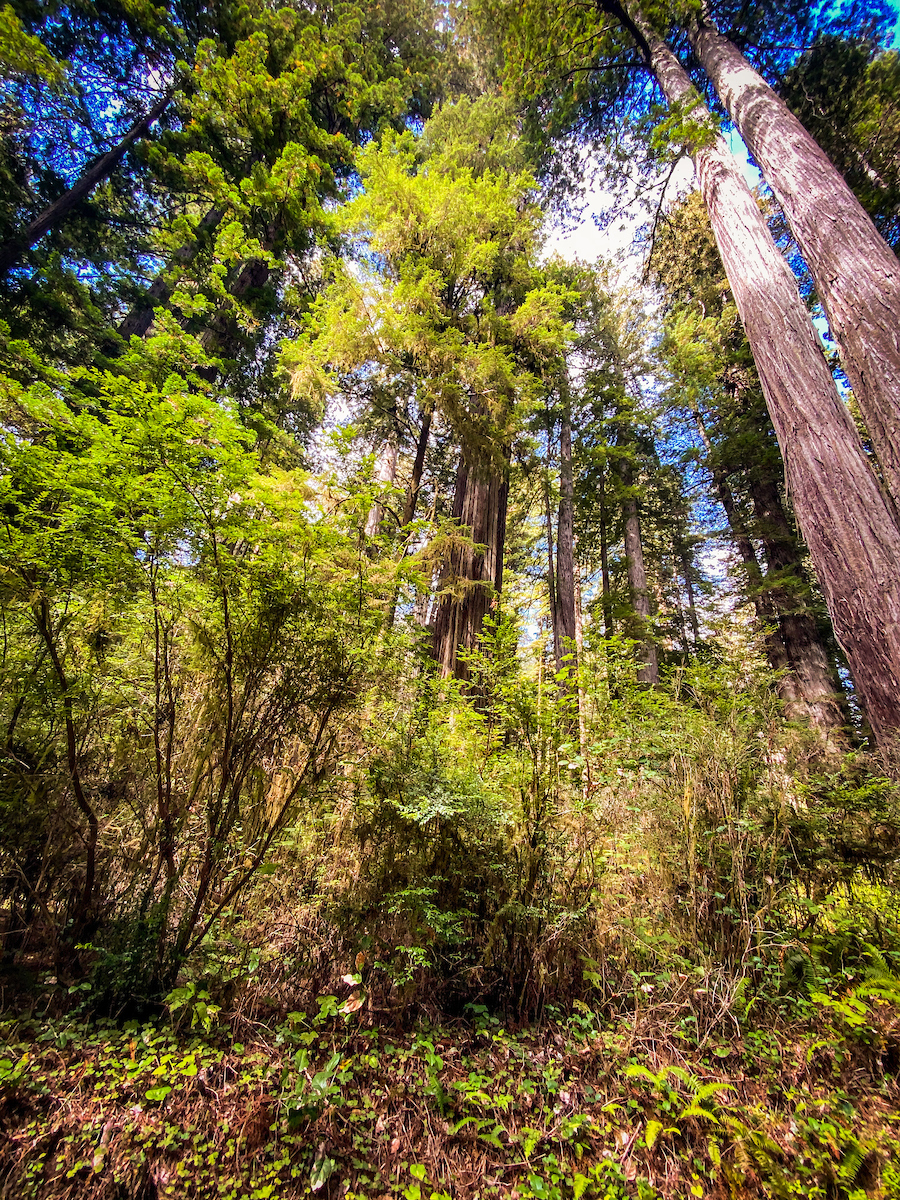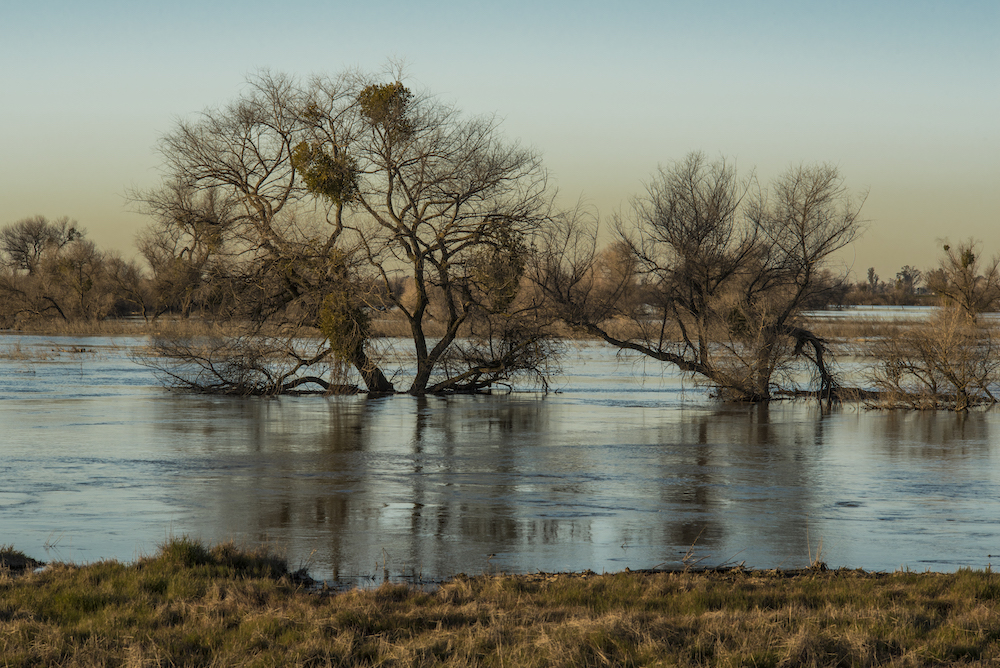Five Things You Should Know About California’s Drought
Climate change is intensifying drought across California, which puts the state in a precarious position that compromises water supplies for drinking and agriculture, increases wildfire risk, and threatens fish and wildlife
By Marcus Kahn |
August 1, 2022

- With typically arid springs and summers, droughts are normal in California… but not at this intensity.
Climate change is intensifying drought across the state, which puts the state in a precarious position that compromises water supplies for drinking and agriculture, increases wildfire risk, and threatens fish and wildlife. A recent study concluded California is in the middle of the worst mega-drought in 1200 years.
We can adapt to future droughts through reducing our water use and switching to more sustainable water uses. We can expand our existing usage of recycled water, replenish our groundwater aquifers and increase our flexibility in crop and municipal uses. - California’s small, rural communities of color are most vulnerable to drought.
According to the Public Policy Institute of California, at least 2,600 well-dependent households experienced water shortages, and roughly 150 small water systems needed emergency assistance during the 2012‒16 drought. As water levels continue to decline throughout California – thanks to the combination of heat, drought, and over-pumping groundwater aquifers– this remains a significant problem for at-risk communities. For more resources on clean drinking water, drought, and community impacts check out the Community Water Center and CleanWaterActions.org.
While addressing the immediate and dire needs for clean water delivery to these households and communities, we can address some of the longer-term needs by funding linkages between small rural communities and nearby larger water municipal supplies; and we can increase our groundwater storage by allowing high flows to spread and recharge local groundwater. - Droughts harm wildlife that live in California’s rivers, streams, and wetlands.
With more than 240 freshwater species in California endangered or vulnerable to extinction, and rivers, wetlands, and forests threatened by the combination of environmental degradation and land development, it is more important than ever that these species have stable environments in which to thrive and reproduce. Decreased flows and rising water temperatures threaten fish and wildlife and have severe implications for regional biodiversity.
We must prevent the near-term collapse of our salmon fisheries by getting the fish to cold water reserves – salmon need cold water streams, where they can successfully reproduce. These cold water streams are endangered by releases from reservoirs that may be too little to sustain salmon, too warm to allow the fish to reproduce or both; and decreases in shaded aquatic habitat that occurs when shade-creating trees are removed from the banks of rivers and streams. We need out-of-the-box strategies to protect cold-water fish species: first, we need a long-term strategy to include environmental water rights in the necessary equation for distributing river water in California. Next, we must collect better information on key flows needed to support fish species[KC9] , and use this information to make our water distribution system fairer and more equitable to the environment and other users. Finally, we must create and restore access to cold-water streams that salmon rely on for key habitat, such as the Feather, Yuba, and Sacramento River tributaries. - California’s intensifying wildfires exacerbate the effects of drought.
We know that drought intensifies wildfires; however, we don’t yet understand how wildfires make droughts worse. We rely on meadows and forests in the Sierra Nevada’s headwaters to provide clean, fresh water downstream. However, when catastrophic wildfire removes the trees and plants and scars the soils, our headwaters are directly exposed to the erosive forces of storms and are unable to absorb rain and snowmelt. As a result, our headwaters experience rapid runoff often carrying tons of sediment into our streams, lakes, and rivers. This means we have more water early in the season and less water during the dry summer months when communities and wildlife need it. Moreover, post-fire runoff often carries pollutants and excessive levels of nutrients causing algae blooms that can be toxic, and accelerating sedimentation – and shortening the lives – of reservoirs and hydroelectric infrastructure. Proper strategic forest management and the use of prescribed fire and cultural burning practices can mitigate these risks and help address poor water quality and sediment loading into streams after wildfires. Studies suggest the costs of prevention are 1/3 the costs of fire recovery.
We must learn to work with fire through ecologically reducing fuel loads. Often, this entails thinning out small trees and brush so that fire is less likely to climb into the high canopy and accelerate its spread across the landscape. Another key strategy is to run low-lying ground fires during the wetter ‘shoulder’ seasons. These prescribed burns stay within carefully guarded boundaries and help to further reduce the fuel load and replenish the soil with nutrients from the ash. Protecting river corridors with smart, locally, and ecologically directed fuel management will keep these areas wetter than the surrounding landscape, and rich in vegetation that can capture sediment from above and provide cover for fish and wildlife.

- Multi-benefit restoration approaches can make a serious impact.
California’s multi-year drought is a problem that necessitates nature-based solutions. Multi-benefit restoration can create a more reliable water storage and cleaner water supply, enhance regional biodiversity, manage flood risk (which is paradoxically also exacerbated by drought), and much more. American Rivers is leading the way on multi-benefit projects such as floodplain reconnection in the Central Valley and meadow restorations in the Sierra Nevada headwaters that have far-reaching benefits for water storage and water quality.

River health is a core facet of California’s drought. Connect with your nearby river and see how you can get involved!



